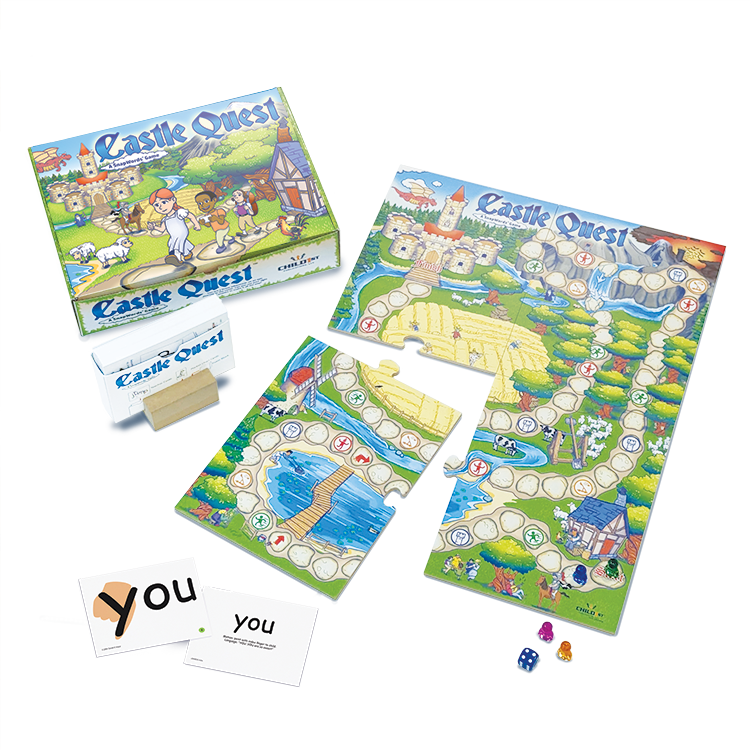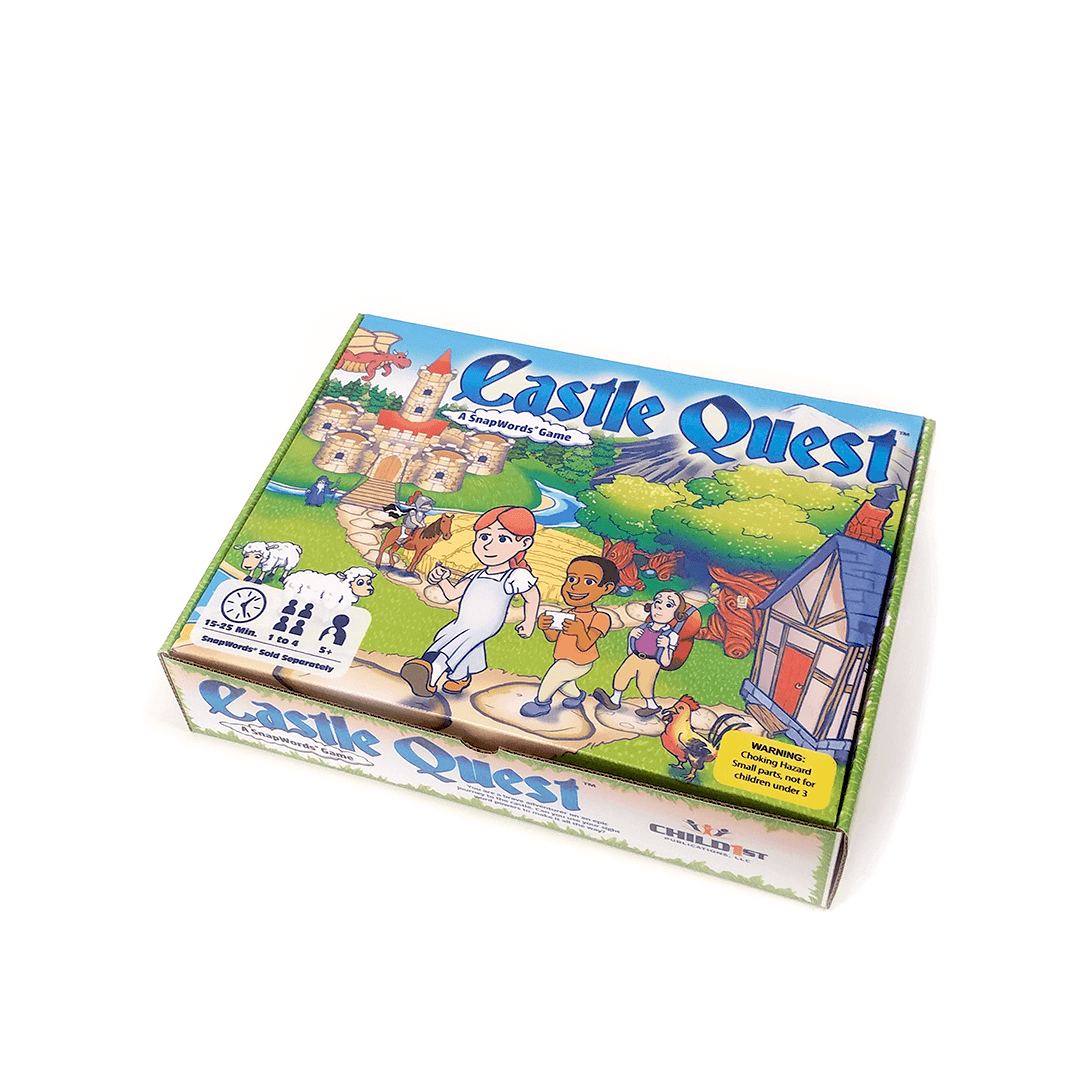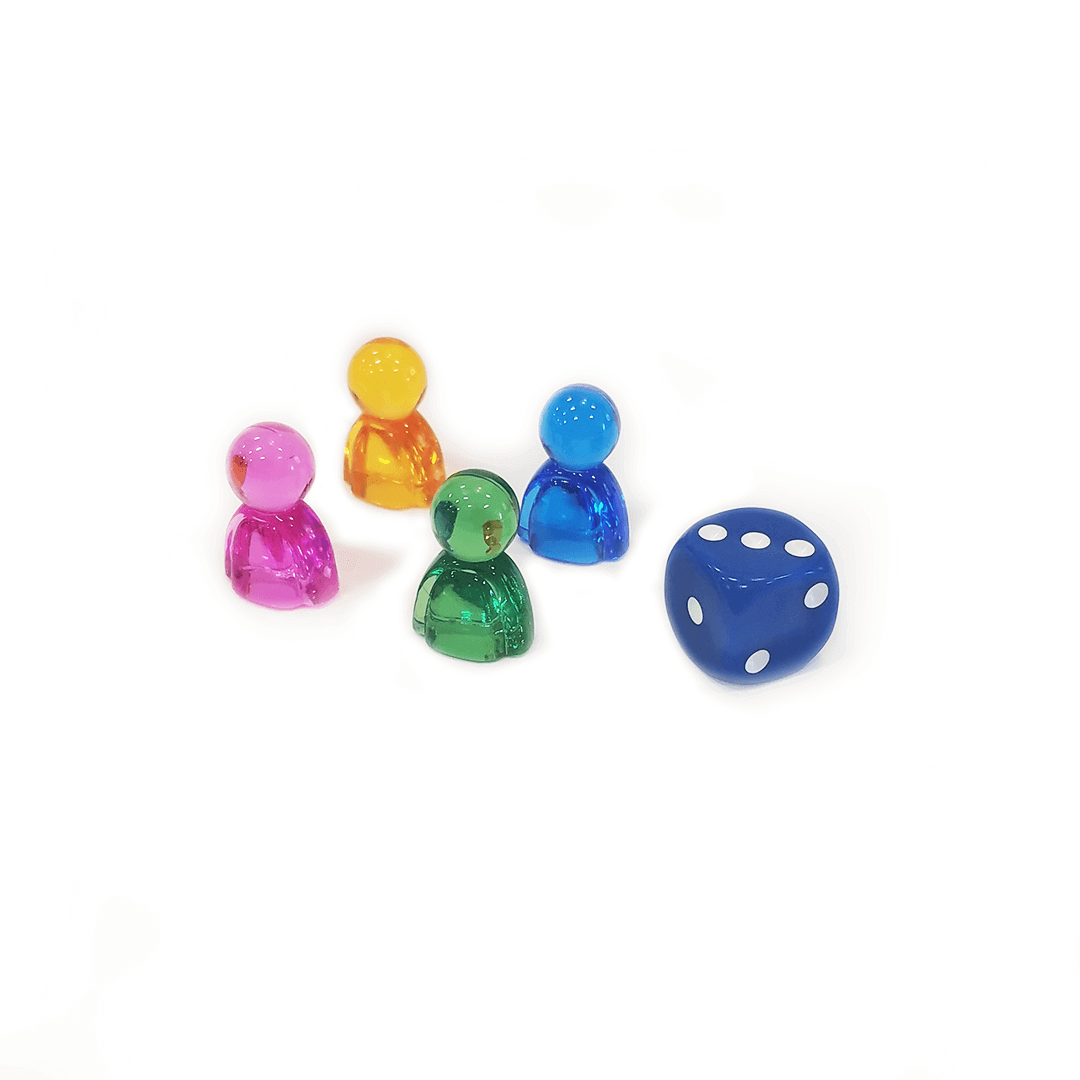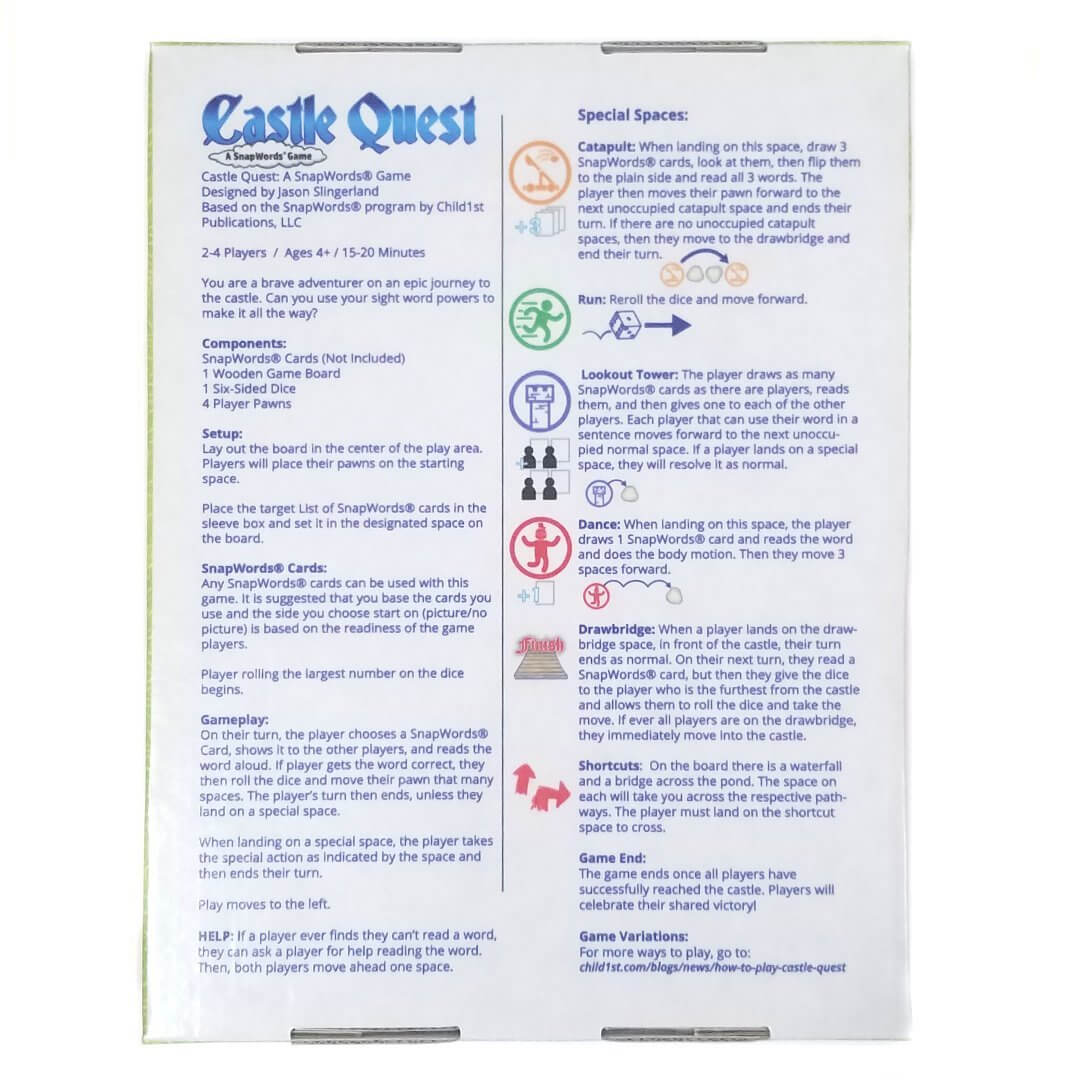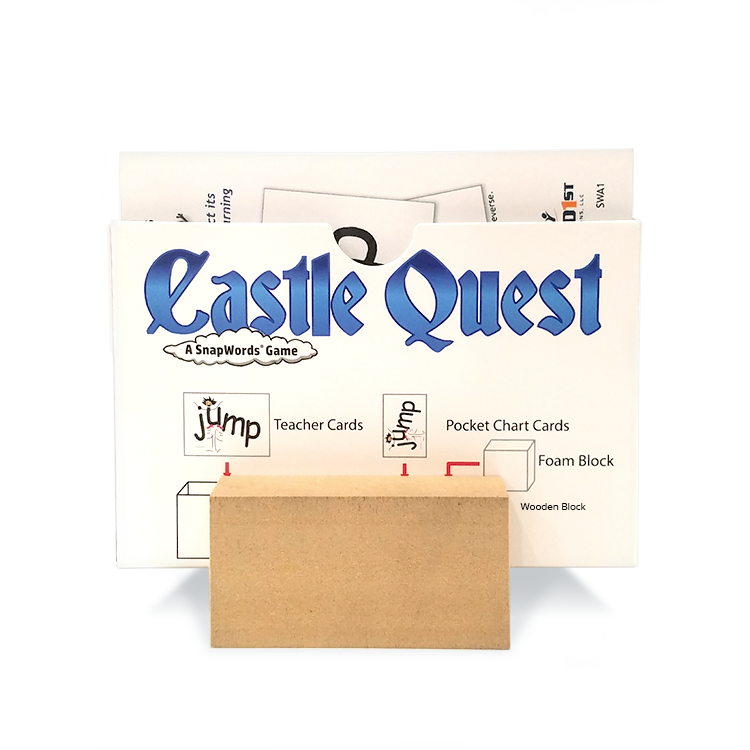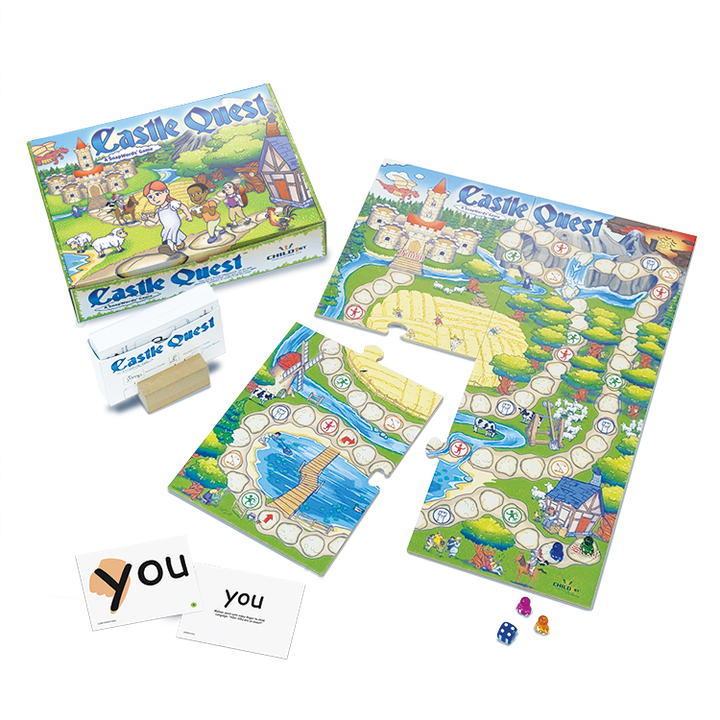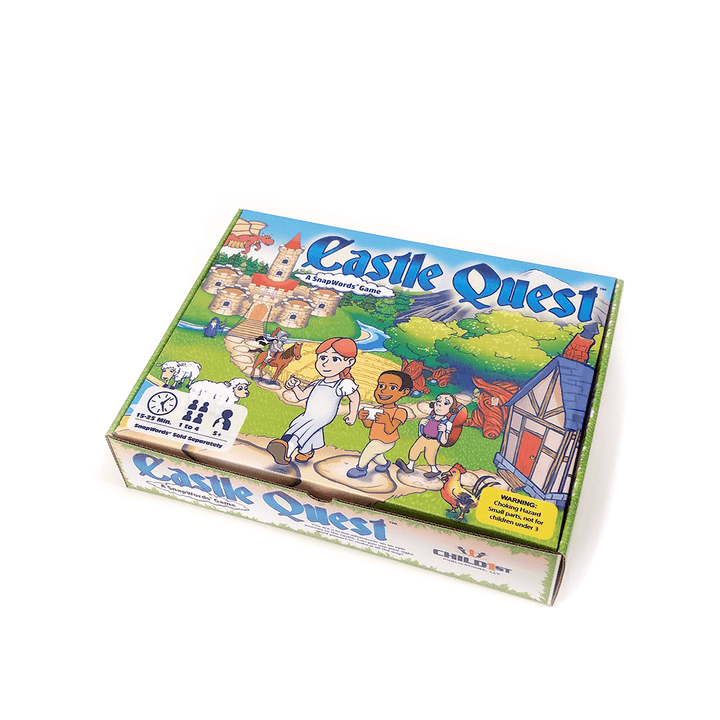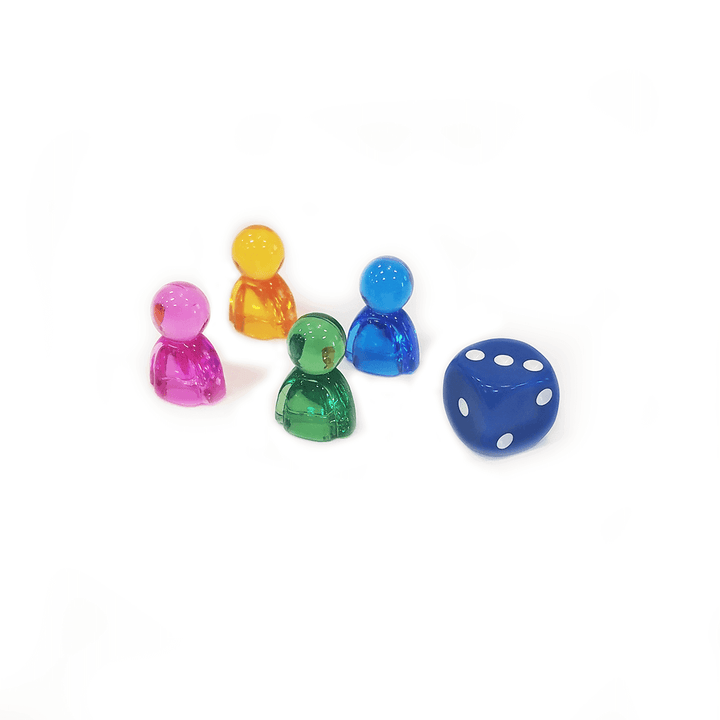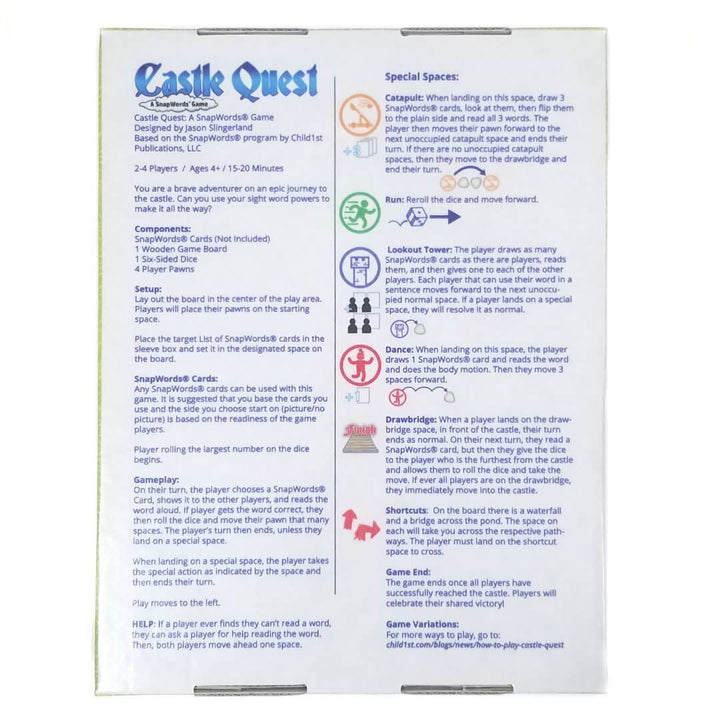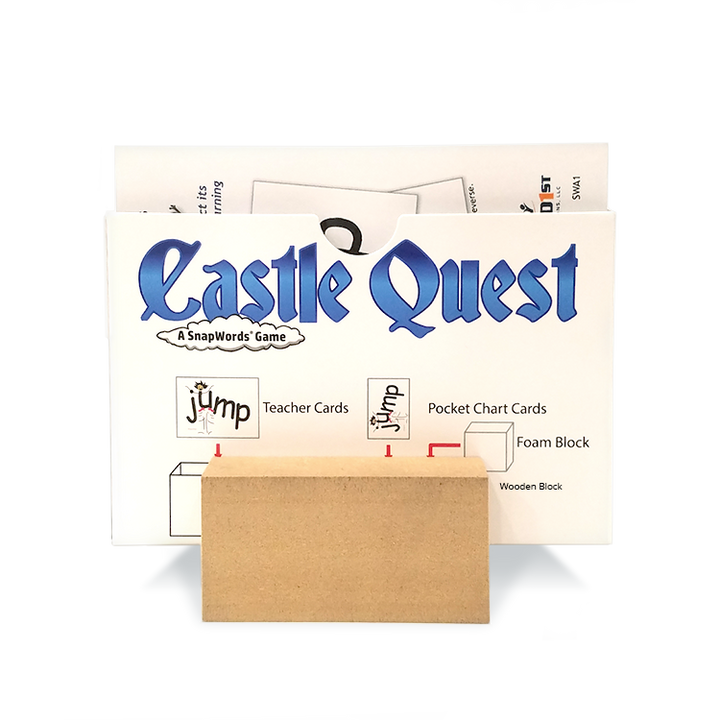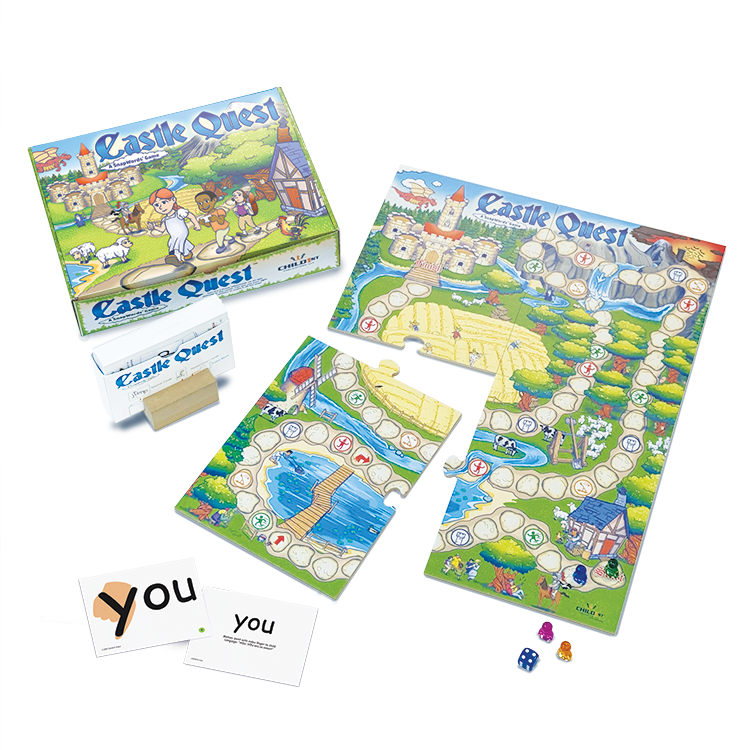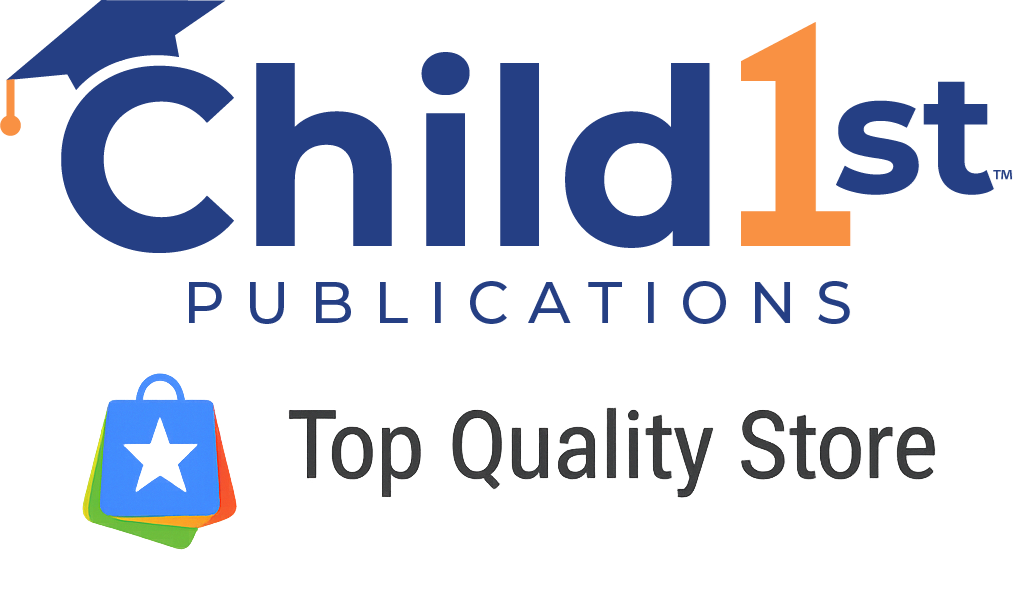¡Haz que el aprendizaje de palabras visuales sea divertido y efectivo! Una vez que haya introducido un conjunto de SnapWords®, ¡deje que los niños repasen y practiquen jugando un juego! Castle Quest está diseñado para fomentar el aprendizaje cooperativo utilizando un enfoque práctico y cinestésico que involucrará a todos los alumnos. ¡Castle Quest incluye un conjunto de SnapWords® de su elección!
Sobre:
La búsqueda para llegar al castillo es colaborativa. Una vez que un jugador llega al castillo, continúa jugando, ¡ofreciendo ayuda a aquellos que aún están en su camino!
Castle Quest incluye:
- Un tablero de madera resistente
- Un soporte de madera para sujetar SnapWords®
- Un bloque de madera para sujetar tarjetas de bolsillo en su lugar.
- Piezas de juego y un dado de gran tamaño.
¡Castle Quest se puede usar con cualquier nivel de SnapWords® en el que se encuentre el grupo! Se puede usar con tarjetas de enseñanza SnapWords® o con tarjetas de gráfico de bolsillo SnapWords®. Castle Quest también se puede usar con otras herramientas de aprendizaje, como los juegos de matemáticas del cerebro derecho . Ver instrucciones alternativas .
Castle Quest viene en una caja de cartón resistente con instrucciones impresas en la parte inferior de la caja.
¡Perfecto para el hogar o el aula!



